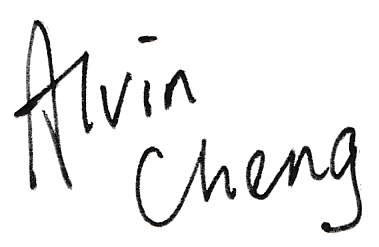The role of digital — from publishing to space of creativity and thinking
Paper has never been replaced by digital devices! Looking back to the history integrated with my own experience, computer has had a very long way to go, and paper will still have its role.
1/ Replacing typewriters in 1990s: The role of Microsoft Office
The introduction of Microsoft Office and Windows 95, which no longer required the operation of Dos, was a game changer for people to publish their work without typewriters. Although the overall experience, especially when we look back, is frustrating, we can’t avoid it or other similar software like iWork and Open Office.
As a student at that time I used to publish my reports about the researches of society and history and print it out as A4-size book, with beautiful fonts chosen and images curated.
But computers couldn’t totally replace papers as there were no digital devices and softwares for easy note taking and drafting yet, especially when laptops were still not portable and the battery performance was too inferior to bring out to work. If we had computers next to us, we might use Microsoft Word. I remember I started saving web articles there. Cloud? When everyone started using USB sticks in 2000s, I sent emails to myself through Gmail if I needed to continue working on the same documents in other places like school. Yes, I prepared for myself before the cloud era.
2/ Wider digital use in 2010s: The emergence of smartphones, tablets and clouds: drafting and brainstorming
▲ Apps in 2014
The introduction of iPhone brought massive apps development especially the emergence of note taking and other productivity apps like Evernote, Notion and Obsidian, making capturing ideas much easier, accessible and manageable than paper. The introduction of iPad has made handwriting and sketching experience much closer to paper, and unlimited canvas on apps like Concepts and Freeform is something paper can’t provide.
Don’t forget netbooks and MacBook Air too, which are much lighter than other laptops at that time. Nowadays most laptops weigh less than 2kg. These mobile devices has made work and creative works more flexible no longer limited to the boring office. I love working an hour or two at my home, and switch to coffee shops because this is where inspiration and productivity is from!
▲ Left: giant laptop vs MacBook Air
▲ Netbook was short-lived, but it was much more portable. Of course, MacBook Air is much better in terms of bigger screen, longer battery life and smaller plug.
▲ Organizing our life is not a dream!
When Microsoft Office is more than a replacement of typewriters for publishing, productivity and creativity apps are more than what we can do on paper. We can capture ideas, draft, brainstorm, think visually… also possible to connect our ideas and thoughts which were started a decade ago.
That said, paper still doesn’t disappear, and it’s less possible to be replaced by digital technology. Art and stationery shops are still here!
But more people write and sketch with pens and papers
More and more people are interested in sketching and journaling, and paper notebooks are more beautifully made (say TRAVELER’S notebook)! Social media allows people to organise events and workshops to sketch together, and people love socialising!
Digital tools are never prefect, and they can be distracting. Paper is a kind of escape to bring people back to the satisfaction, or the optimal psychological state called Flow, that the Internet cannot provide.
Even though digital technology is much more seamless and convenient, there are still embarrassing moments when I try to show someone my portfolios through my phone or iPad: although I try my best to put everything into one bucket, like Apple Notes or Evernote, it can be somewhere else that I need time to find, and I can’t make everything offline so it will take time to download while the phone reception is unstable…
On co-existence
▲ Digital MacBook as well as paper books and sketchbooks in the same place.
When some people are able to become digital minimalists, go back to the so-called “good old days” to outlive technology companies by not relying on online services, or even go all-in centralised “second brain”, I find that I am really not capable of achieving the above states.
I still need paper notebooks for urban sketching. If I do life drawing, I prefer A1 paper with charcoals to love to see my hands move around in a big distance.
When I was told to use plain text files (.txt) to avoid the possible impact created by technology companies (like they can shut down one day), I can’t especially because I need visual thinking and expressions. I still use Apple Notes which can’t easily be exported, but I usually keep a backup as a plain text files with attachments. I still use cloud services to make sure my data is most up-to-date. I hate file systems but I still keep lock-in databases and Finder.
I also use more apps, and recently I learned Procreate Dreams.
▲ iPad and TRAVELER’S notebook
Find the space where I feel comfortable. No need to insist on looking for the only ideal area to do something, as we sometimes work at home, sometimes move to coffee shops, sometimes at office. Sometimes on the moving bus. Switching to environments usually brings more ideas and relieve stress: more productive and creative.
Tools are like physical spaces. We don’t need to stick to only one app or one hardware. It’s nothing wrong with concentrating on something for a short period of time, and switching to other tools for other tasks. Maybe we will feel better when we come back to the tasks or tools we followed up before. It’s always great to live with everything on the planet!







